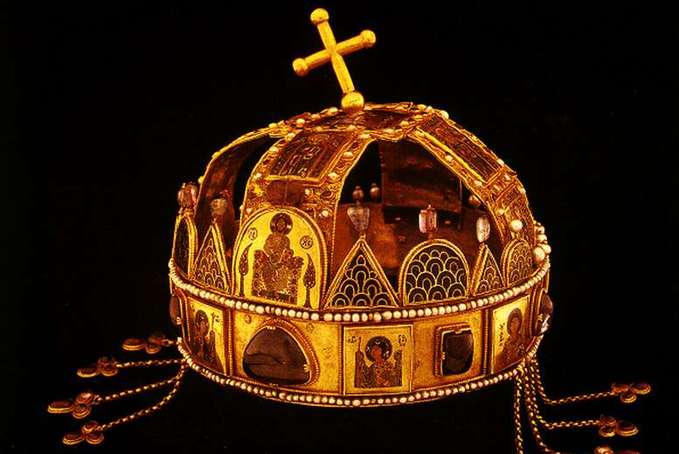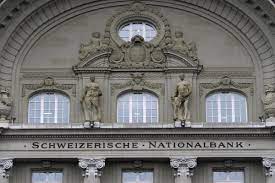We need to talk about the legally correct naming of the Holy Crown and coronation badges. We can assume that one of the many secrets of the Holy Crown is the fact that the exact circumstances and reasons for naming it are unknown.
The classification "Holy" can be attributed to many different explanations on a theoretical basis. According to the most accepted view, the holy name is based on the public belief of the Hungarian people; the Crown's relation to our first Holy King; the fact of offering the country to the Blessed Virgin Mary, which made the country and the Crown the property of the Mother of God ; the liturgical role of the Crown at royal coronations, when it is an instrument of God's grace.
After the return of the Holy Crown in 1978, József Bölöny wrote his opinion, Sacra regni corona, to the point and precisely. It is more than interesting how Bölöny, who is well-known as a legitimist constitutional lawyer between the two world wars, explains the status of the Holy Crown as "Holy" in the context of Kádár. Let's see the relevant part of his writing:
"The Holy Crown.
The announcements usually report on the arrival, handover, historical and artistic history of "the Hungarian crown", and talk about "the Hungarian royal crown". Only István Nemeskürty calls it the holy crown (old article) and Ervin Szuhay-Havas in the Christmas issue of Népszabadság. However, there is no reason to ignore the "holy" epithet of St. Stephen's crown, even if, or perhaps least of all, we consider it merely an epithet ornans, a decorative epithet. This decorative adjective you. a thousand-year-old tradition attaches to the crown, which with this epithet has become "the symbol of the thousand-year-old Hungarian statehood".
What does this epithet "holy" mean for our crown? The Hungarian "holy", the German "heilige", the English "holy" and the French "sainte" offer few clues to clarify this. However, we do not need to look abroad for a solution to this question, because our domestic Latin language, which was officially used until the middle of the last century, clearly distinguishes us in this matter.
You do not call the Hungarian "sacred" and similar adjectives of foreign languages primarily in the proper sense. our crown, not as "sancta corona", but as sacra corona. Saint (sanctus, -a) refers to God, the saints of the Catholic Church, persons and personal concepts pleasing to God. Sacer (sacra) was attached to holy, sanctified objects and things. This adjective "holy" is much broader than aman. It does not depend on canonization, not even on holiness in the religious sense, nor on pleasing God. The address of the Holy Father (Pope) is Sancte Pater, the Latin name of the Apostolic Holy See (Papacy, Roman Curia) is Sacra Sedes (Apostolica). This epithet of the kings formerly called "His Holy Majesty" is in Latin Sua Sacra¬tis¬si¬ma Maiestas, because only two of them were sanctus (sanctissimus): St. Stephen and St. László.
The sacra corona is not a religious concept declared holy, but rather worn by our other great kings, sanctified by them and considered holy by tradition (sacra) the thousand-year-old emblem of Hungarian statehood (1836: II. tc. provides for "guardians of the country's sacred crown"), it is not the ruler (rex), but the country (regnum), the symbol of the continuous existence of the Hungarian state.
It has been considered and called a saint since the XIII. from the middle of the century (including Béla IV in 1256) the crown, which sanctifies the person of the king. Already in 1388, Dalmatian cities expressed their loyalty to the "holy crown of Hungary".
None of the coronation insignias are jewels, but insignia of royal power, with which the nation girded its crowned and thus fully entitled king. That is why they were also called clenodia regni in Latin, which obviously means the insignia of the country, not "jewels of the country".
three crosses preserved in the treasury of Esztergom can be classified as coronation badges pax or pacificale.
The coronation insignia bearers followed in the following order:
1. the chief chamberlain with the oath cross;
2. with the sword of St. István, the master cupbearer;
3. the tárnokmeister with the pax, i.e. small cross;
4. the Croatian treats the country apple;
5. the regional judge with the scepter;
6. the palatine, or the elected representative of the parliament entrusted with palatine tasks, with the holy crown.
From the distance: in front of the king following the palatine or deputy palatine, the youngest bishop in rank with the double cross (apostolic cross) marched flanking from the right, and from the left the master horseman with the drawn sword of the country.
At the coronation ceremonies, the descriptions prepared by the mixed delegation of both houses of the Parliament and presented to the Parliament as an authentic description, also referred to the coronation badges as national badges , in accordance with the previous usage of the word clenodia regni.
The IV before the coronation in 1608. etc. it provides for the country's crown "and its old insignia" (in the Latin text: clenodia); the XVI century after the coronation etc. from the crown "with all the insignia included in the register"; of 1715: XXXVIII. etc. determines that the holy crown of the country together with its belongings (cum suis accessoriis) shall be kept in Hungary."
These lines speak for themselves, combining legal expertise and accuracy with historical approach and method The correct term and usage: Holy Crown and coronation badges.













